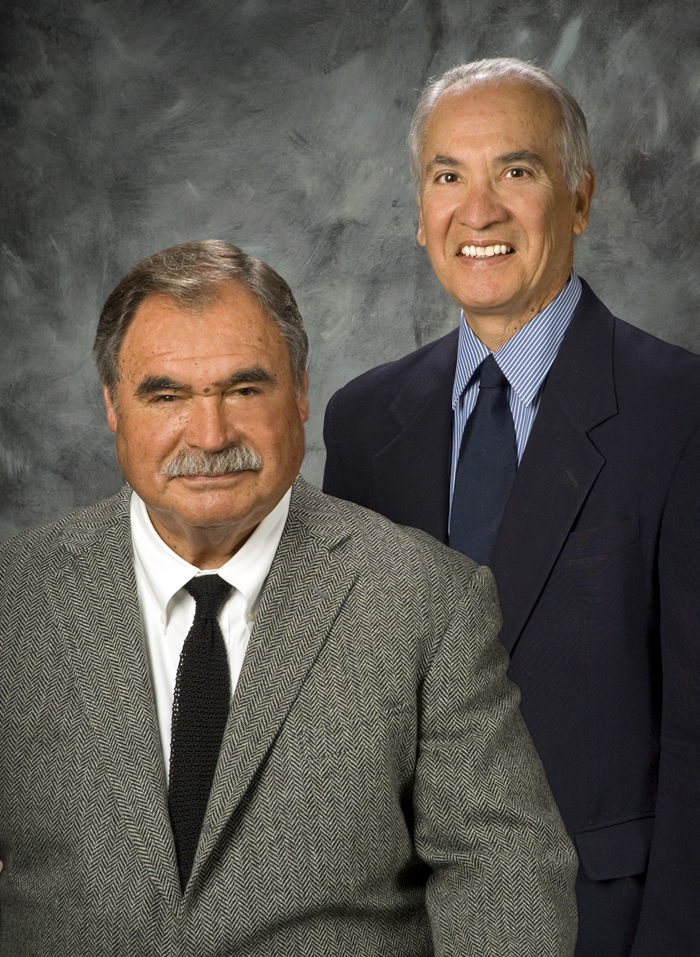
UCSB Scholar Examines 1968 ‘Blowouts' and Chicano Struggle for Educational Justice
In March 1968, thousands of Chicano students walked out of their East Los Angeles high schools to protest decades of inferior or discriminatory education in their so-called "Mexican Schools." During these historic walkouts –– or "blowouts," as they were known –– the students were led by Sal Castro, a Mexican-American teacher who encouraged them to make their grievances public after school administrators and school board members failed to listen to them.
"Blowout! Sal Castro and the Chicano Struggle for Educational Justice" (The University of North Carolina Press, 2011), a new book by Mario T. García, professor of Chicana and Chicano Studies and history at UC Santa Barbara, tells the story of the walkouts, which effectively shut down all East Los Angeles high schools for the better part of a week. He also tells of the man who inspired the students to resolve their issues through a nonviolent demonstration.
At a presentation on Wednesday, February 23, García and co-author Castro will introduce the book and discuss the student protest that, according to García, sparked the urban Chicano movement of the late 1960's and early 1970's –– the largest and most widespread civil rights protests by Mexican Americans in U.S. history. The presentation begins at 3:30 p.m. in the McCune Conference Room, 6020 Humanities and Social Sciences Building. It is free and open to the public.
"I have no doubt that the walkouts wouldn't have happened without Sal Castro," García said. "He inspired the students. When they saw that their teacher was willing to put his career on the line, that gave them a lot of courage."
As a faculty member first at Belmont High School and then at Lincoln High School, Castro became aware of the high dropout rates among Chicano and Latino students, as well as a lack of sensitivity on the part of top administrators to the students' language and cultural backgrounds. He also saw their low reading scores, and a tracking system that directed them toward vocational jobs rather than higher education.
"He began to realize that only a dramatic action was going to shake up the school system," García noted. "Even before 1968, some of the students at Lincoln had approached the school board and district administration about some of the problems, but no one would listen. That thoroughly convinced Sal that dramatic action was necessary."
Castro brought together current and former Lincoln High School students, as well as UCLA and Cal State Los Angeles students, who were products of the East Los Angeles schools. "He wanted them to act as leaders who would help organize the kids," García said. In reality, he added, Castro believed that just the threat of a massive walkout would induce the school board and administration to pay attention to the students' grievances.
"His sense was that they might be able to use this as a bluff," García continued.
However, during the first week of March, a group of students at Wilson High School walked out in protest of the principal's cancellation of a school play. That led to a spontaneous walkout by several hundred students, which forced Castro to have the other East Los Angeles schools follow suit. In all, as many as 20,000 students participated –– including those from other areas of Los Angeles who took part in the action as a show of solidarity –– and the schools were brought to a standstill.
"The sheer number was something the school board and administrators couldn't ignore, and they were forced to meet with the students," said García. "The L.A. school system was shaken to its roots, and this is the action Sal is best known for."
Castro did pay a price for his involvement in the civil action. In May 1968, he and 12 others were arrested by Los Angeles police and indicted on a felony charge of conspiracy to foment a walkout of the schools. After two years of legal wrangling, the indictments were overturned, but Castro's teaching career had been seriously impacted. He was barred from teaching at Lincoln High School, until pressure from the community forced the school board to reinstate him; and, even then, he was transferred from one school to another, finally landing back at Belmont, where he remained until his retirement in 2000.
"Sal's story is a history of a dedicated and committed teacher," said García. "Through the walkouts, the students –– and the entire Chicano community –– learned that they could bring about change. They could force the power structure to respond to the needs of their community."
Related Links



